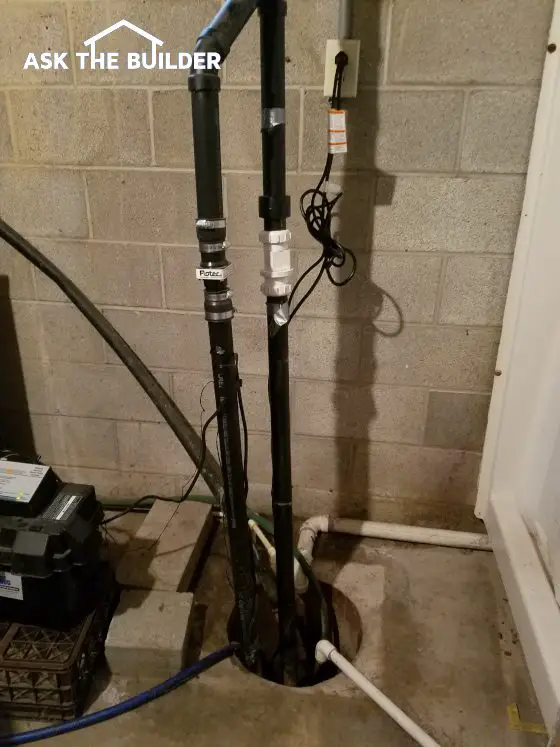Sewer Gas from a Sealed Sump Pump

Sewer Gas Sump Pump - Sewer gas can infiltrate a sump. There are several ways it happens.
Sewer Gas from a Sealed Sump Pump
"Sealed sumps such as yours must have an isolated three-inch vent pipe that leaves the sump and extends up through the roof of your home."
DEAR TIM: We've just finished renovating our bathroom and we have a problem with sewer gas smells. The house is a split-level on a septic system. This lower-level bathroom drains into a holding tank or sealed sump. When the tank reaches a certain level, the water and waste are pumped up to where it can flow into the septic system via gravity. Each time the pump operates, the new toilet bubbles and loses some water in the bowl. Within a few minutes, the room is filled with a stinky odor. What is the cause and how do we fix this? My beautiful new bathroom stinks. Kathryn C., Destin, FL
DEAR KATHRYN: I'm at a slight disadvantage since I can't actually see the sump installation, but my 20+ years of being a licensed master plumber tell me the sealed sump is not vented properly.
Do Sealed Sumps Require a Vent?
Sealed sumps such as yours must have an isolated three-inch vent pipe that leaves the sump and extends up through the roof of your home. This sump vent must not connect into the regular vent piping that serves the rest of your plumbing system.
CLICK or TAP HERE to get FREE BIDS from local plumbers who can stop sewer gas.
Why is the Vent Required?
This special vent is required for any number of reasons. For starters, each time waste and water enters the sump, some of the air in it must leave the sump as the added water and waste displaces this air. The air exits the sump via the vent pipe.
But when the sump level rises to a point and triggers the sump pump to turn on, the exact opposite happens. The water leaves the sump and air must re-enter the sump to take up the space that was occupied moments before by the sewage. If air doesn't enter the sump through a vent, the water leaving the sump via the pump creates a powerful vacuum.
Is the Sealed Sump Getting Air From my Toilet?
In fact, this is exactly what is happening per your description of events. The pump turns on and the toilet bubbles. The bubbling is the suction you are hearing as the air-starved sump gasps for air. Just before the bubbling or gurgling starts, it has sucked some water backward from the toilet bowl back towards the sump. This is why you have a lowered water level in the toilet bowl each time the sump operates.
How Does the Sewer Gas Get Into the Bathroom?
Once the water has been sucked from the toilet bowl, it creates an open pathway for the noxious sewer gases from the sump and septic system to enter your home.
As soon as the plumber comes back and installs the new vent line, your bathroom will start to smell as fresh as a field full of fragrant wildflowers!
Watch this video to see how Tim SOLVED a problem in minutes!